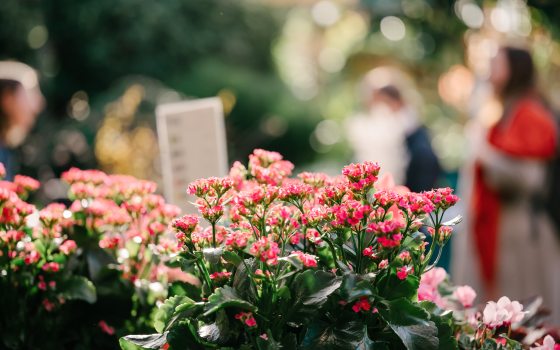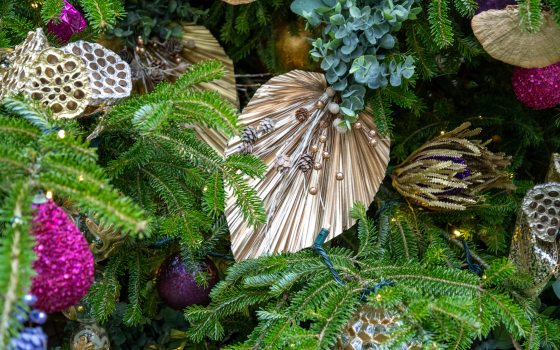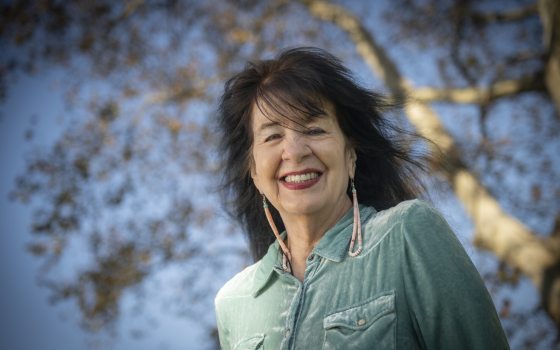Horticulture, or the art or practice of garden cultivation and management, is critical to life not only at Longwood Gardens, but around the globe. From flowers to farming, horticulture continually evolves to meet society’s needs—feeding people and wildlife, cleaning the air, producing materials for everyday life, and bringing beauty to those who seek it. At Longwood, our growing knowledge of horticulture is constantly expanded on by our staff, students, and fellow horticulturists—and as this year’s Today’s Horticulture Symposium hosted by the Professional Horticulture Alumni Association showed, horticulture is a practice of resilience, of roots, and of relevancy.
Along with the Chanticleer Foundation and the Professional Horticulture Alumni Association, with support from Mt. Cuba Center, North Creek Nurseries, JR Peters, Inc., and The Scott Arboretum of Swarthmore College, we were honored to host the Today’s Horticulture Symposium on February 3, featuring notable ideas about the state of horticulture. During the day-long symposium, strong themes of resilience, roots, and relevancy emerged throughout many of the speakers’ presentations … leading to an exploration of how the world of horticulture adapts to changes in climate, culture, conservation, and integration of new technologies.
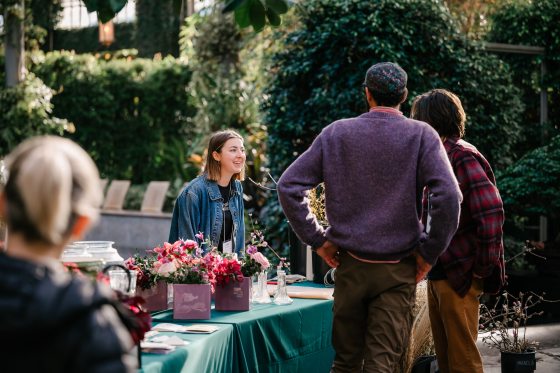
Held during the symposium, the Professional Horticulture Program plant sale benefitted students currently enrolled in Longwood’s Professional Horticulture program and their upcoming study abroad travel. Photo by Laurie Carrozzino.
To start, presenters Christopher Bolden-Newsome and Owen Taylor from Truelove Seeds looked to how horticulture has adapted in the past. They discussed how losing touch with our roots has left many removed from the deep agricultural practices that connect us to our ancestors while addressing the ways we can reconnect through seeds. In running Truelove Seeds, a farm-based seed company offering culturally important and open pollinated vegetable, herb, and flower seeds, the duo works with farmers and gardeners growing their ancestral seeds from locations around the world. For both Bolden-Newsome and Taylor, the absence of historical context removes cultural meaning from today’s crops.
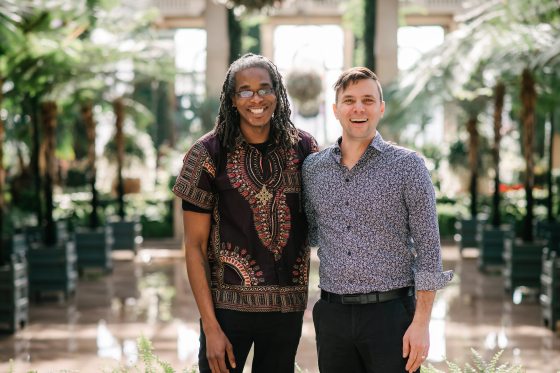
Christopher Bolden-Newsome (left) and Owen Taylor (right) presented on their work with Truelove Seeds. Photo by Laurie Carrozzino.
“If we understand culture as ideas and practices and objects that are created to be used by people to give shape and meaning to life, then we have to recognize that the seeds we pass on are a vital part of this culture because they then give the nutrition and the sustenance and the flavor to these cultures that we create,” Bolden-Newsome said. “And what a devastation when we lose those seeds after having lost everything else.”
Bolden-Newsome credits the power of grandparents with passing on the rich histories and cultural knowledge of families that may otherwise be lost. In weaving a story wrapped around ancestral roots, they emphasize knowing, understanding, and continuing the cultures of ancestral seeds to give meaning and shape to our lives.
And while culture is embedded in many horticultural practices that have passed through generations, Jason Duverney-Gaspar, New York city horticulturist and former professional horticulture student, brought up the idea of relevancy. It’s not unusual for professional conversations to swirl around horticulture being a dying craft, he says. In those moments, Duverney-Gaspar continues to see horticulture as relevant through its ability to empower communities to connect through plants.
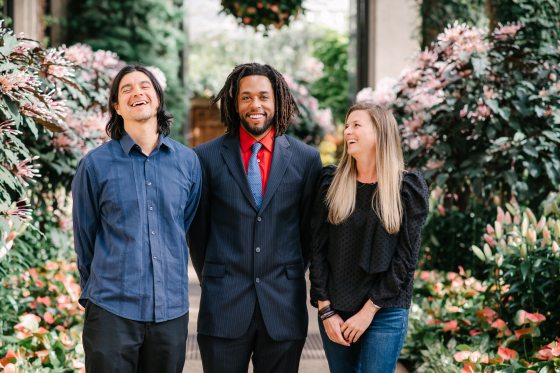
Jason Duverney-Gaspar (left) was one of three alumni speakers to present at the Today’s Horticulture symposium. Jordan Foreman (middle) and Shannon Schmidt (right) also presented. Photo by Laurie Carrozzino.
Horticulture is not dead, he argues, it’s changing. Today, Duverney-Gaspar fosters community through ongoing projects such as HorticultureNYC, The School of Experimental Horticulture, and Plantas de Justicia. These powerful projects harness the desires of community gardeners to focus on workforce development, activism, land responsibility and more. “Community gardeners are some of the most resilient and creative people I’ve ever met and they are an inspiration,” Duverney-Gaspar said.
Through placemaking—focusing on transforming public spaces to strengthen the connections between people and spaces—horticulturists can glean new insights into how plants help people make sense of the world. “I’d come from a place where people were dreaming of putting their hands in the soil 24/7, however, that world was different,” Duverney-Gaspar lamented. “The word I kept going back to was relevance. When it came to social issues, the environment, and challenging the practice of horticulture, there was a huge gap between urban farming, gardening, and professional horticulture."
While building a garden for everyone is complicated, it’s not impossible. There is work to be done to make horticulture more relevant. The practice of growing—whether from seeds, cuttings, or divisions—can be demystified to make it more accessible.

Attendees listen intently at the Today’s Horticulture symposium. Photo by Laurie Carrozzino.
As speakers throughout the day connected with past and present, the symposium concluded by encouraging attendees to think like a futurist. And, perhaps, the most meaningful takeaway is not to think of it as the “future of horticulture,” but the “futures.”

Among the future of horticulture is Longwood’s Professional Horticulture Program students. This two-year, tuition-free program combines hands-on, immersive learning with classroom experience to train and prepare future horticulturists for successful careers. Photo by Laurie Carrozzino.
To think like a futurist, horticulturists need to scan the horizon to be aware of a wide range of possibilities that can be interpreted as early signals of change. David Bengston, an environmental futurist with the Strategic Foresight Group of the US Forest Service and adjunct professor at the University of Minnesota, encourages looking at three types of futures—possible, plausible, and preferable. For his talk, Bengston identified possible signals of change for the future of horticulture, including autonomous vehicles, growing indigenous empowerment, and increasing frequency and severity of storms. Each of these signals with their own positive and negative implications for the horticulture industry.
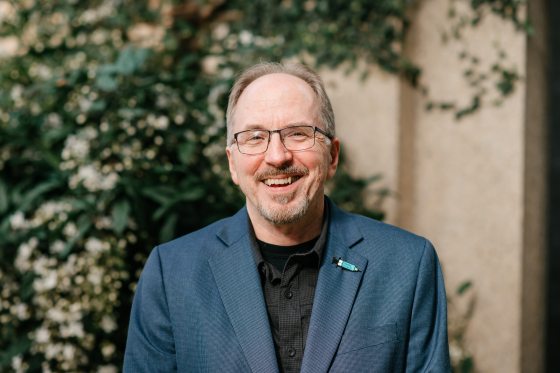
David Bengston, PhD., is an Environmental Futurist with the Strategic Foresight Group of the US Forest Service, and adjunct professor at the University of Minnesota where he teaches environmental futures. Photo by Laurie Carrozzino.
“The need to think about resilience in anything we do—any project or activity—resilience is key,” he said. And resilience is preparedness. While planning for possible futures is good, Bengston left the audience thinking about the importance of having a compelling vision of the future—especially one with a positive view. Creating a shared vision of a sustainable and desirable future is a critical task facing not only horticulturists, but humanity.
